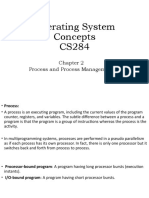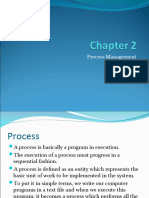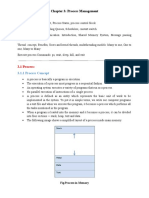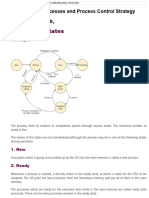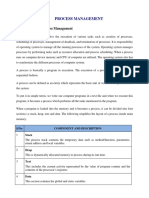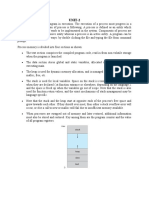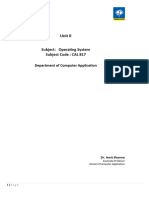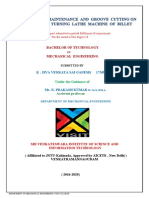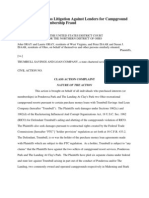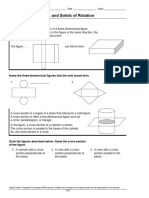0% found this document useful (0 votes)
16 views16 pagesOperating System Unit 2
This document provides an overview of process management in operating systems, detailing the definition of a process, its memory structure, and the Process Control Block (PCB). It explains the various states of a process, the role of process schedulers, and the types of CPU scheduling, including preemptive and non-preemptive scheduling. Additionally, it introduces several scheduling algorithms such as First Come First Serve, Shortest Job First, Longest Job First, and Round Robin, highlighting their characteristics and examples.
Uploaded by
rksc098Copyright
© © All Rights Reserved
We take content rights seriously. If you suspect this is your content, claim it here.
Available Formats
Download as PDF, TXT or read online on Scribd
0% found this document useful (0 votes)
16 views16 pagesOperating System Unit 2
This document provides an overview of process management in operating systems, detailing the definition of a process, its memory structure, and the Process Control Block (PCB). It explains the various states of a process, the role of process schedulers, and the types of CPU scheduling, including preemptive and non-preemptive scheduling. Additionally, it introduces several scheduling algorithms such as First Come First Serve, Shortest Job First, Longest Job First, and Round Robin, highlighting their characteristics and examples.
Uploaded by
rksc098Copyright
© © All Rights Reserved
We take content rights seriously. If you suspect this is your content, claim it here.
Available Formats
Download as PDF, TXT or read online on Scribd
/ 16


